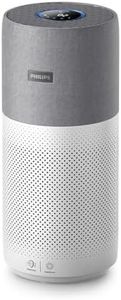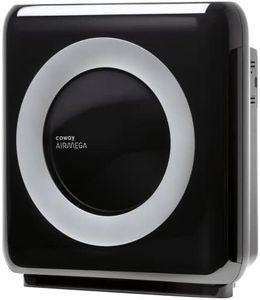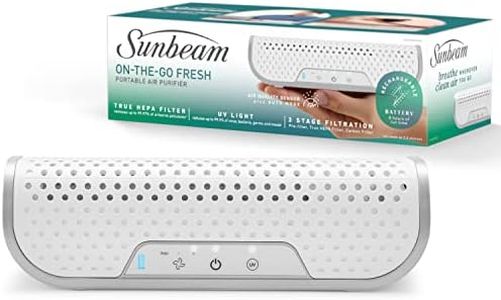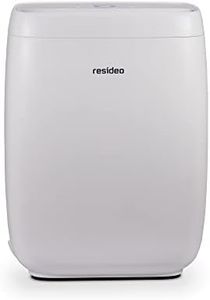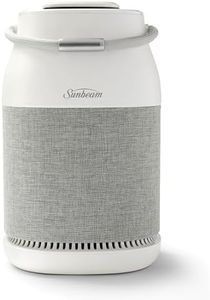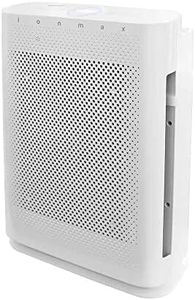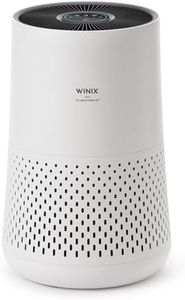We Use CookiesWe use cookies to enhance the security, performance,
functionality and for analytical and promotional activities. By continuing to browse this site you
are agreeing to our privacy policy
10 Best Uv C Air Purifiers
From leading brands and best sellers available on the web.Buying Guide for the Best Uv C Air Purifiers
Choosing a UV-C air purifier can seem overwhelming, but breaking down the key features helps you find a model that fits your unique needs. Start by understanding your main reason for buying—do you have allergies, pets, or concerns about airborne germs? Think about where you’ll use the purifier: a bedroom, living room, or maybe a workspace. Each space may call for a different size or strength. It’s important to know how UV-C technology works: it uses ultraviolet light to help destroy or deactivate certain airborne bacteria and viruses, often as a supplement to other filtration methods. Balancing UV-C features with overall filtration and ease of use will help you make a smart choice.Room Size CoverageRoom size coverage tells you how large an area the purifier can effectively clean, usually measured in square feet or square meters. This is important because a purifier that’s too small for your room won’t work efficiently, while one that’s too large may consume more energy than necessary. Models are often grouped as small (up to 150 sq ft), medium (150-400 sq ft), and large (over 400 sq ft). Think of the main space where you plan to put your purifier, and check the room’s dimensions to match the coverage. Pick according to the largest single room where you’ll use it most often for the best results.
UV-C Lamp Power and PlacementThe strength and positioning of the UV-C lamp affect how effectively the purifier can neutralize germs. A higher wattage lamp may kill more pathogens, but lamp design matters too—the UV-C light should directly contact the air for a sufficient amount of time as it passes through. Some purifiers have the UV-C component as a separate chamber, while others integrate it with filters. Generally, standard models have lamps ranging from 5 to 15 watts. For routine home use, a mid-range wattage is usually sufficient, while very sensitive situations (like medical environments) may call for higher intensity or professional systems.
Filter SystemUV-C air purifiers often pair ultraviolet light with other filters, like HEPA or carbon filters. This layered system helps trap larger particles (dust, pollen) before the UV-C treats microscopic pathogens. HEPA filters are excellent for fine particles and allergies, while carbon filters target odors and gases. Some purifiers use all three methods. If allergies or pet dander are a concern, look for a model with a true HEPA filter, but if your focus is on killing germs, the UV-C component will be most relevant. For general use and better air quality, a combination of all is usually best.
Noise LevelNoise level, commonly stated in decibels (dB), is important if you’ll run the purifier in bedrooms, offices, or other quiet spaces. Lower dB levels (under 30 dB) are barely noticeable, while higher levels (40-60 dB) might disturb light sleepers or distract in work areas. Many air purifiers offer multiple fan speeds—the higher the speed, the more noise. Consider where and when you plan to use it when evaluating noise: if you need it overnight or during concentration, seek out quieter models or ones with a quiet/sleep mode.
Maintenance NeedsMaintenance involves replacing UV-C bulbs and filters, as well as cleaning pre-filters if present. UV-C bulbs have limited lifespans, often lasting 6-12 months before needing replacement. Filter life can vary widely—HEPA may last 6-12 months, carbon a bit less, and pre-filters often need cleaning every few weeks. Consider how easy it is to access and change these parts, and check whether replacements are easy to find. If you want convenience, look for models with simple access doors and clear replacement indicators.
Safety FeaturesBecause UV-C light can be harmful to eyes and skin, it’s critical for air purifiers to have enclosed chambers and automatic shut-off protection when opened. Some models also use extra filters to trap ozone, which some UV-C lamps may produce. Make sure the model you choose has certifications and safety mechanisms, especially if you have curious children or pets. Always check for enclosed UV-C systems and official safety approvals if peace of mind is a top priority.


